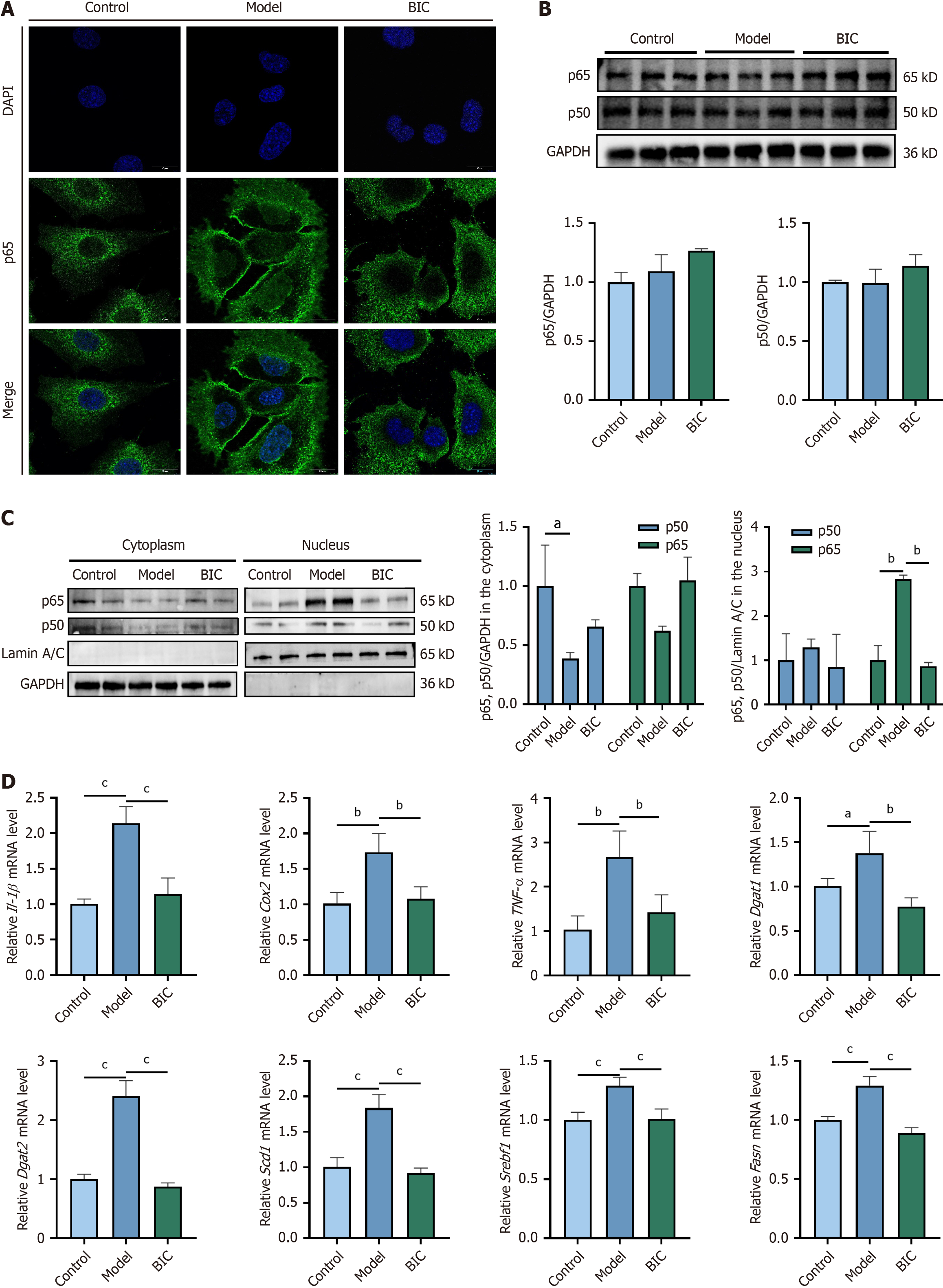Copyright
©The Author(s) 2025.
World J Gastroenterol. May 7, 2025; 31(17): 105438
Published online May 7, 2025. doi: 10.3748/wjg.v31.i17.105438
Published online May 7, 2025. doi: 10.3748/wjg.v31.i17.105438
Figure 5 Bicuculline affects lipid accumulation in free fatty acid-treated AML12 cells through the nuclear factor-kappa B pathway.
A: After immunofluorescence staining, the localization of nuclear factor-kappa B p65 (green) was observed using confocal microscopy. The nuclei were stained with DAPI (blue); B and C: Representative western blotting results and density analysis of p65 and p50 expression; the results are expressed as the means ± SD (n = 2); D: QRT-PCR analysis of Dgat1, Dgat2, Scd1, Srebf1, Fasn, IL-1β, COX2, and TNF-α gene expression. The results are expressed as the mean ± SD (n = 4). Compared with the model group. aP < 0.05; bP < 0.01; cP < 0.001; BIC: Bicuculline.
- Citation: Wang XM, Dai Z, Lu DJ, Bao CQ, Yang NB, Zhou YP. Bicuculline ameliorates metabolic dysfunction-associated steatotic liver disease by inhibiting the nuclear factor-kappa B pathway and reducing lipid accumulation. World J Gastroenterol 2025; 31(17): 105438
- URL: https://www.wjgnet.com/1007-9327/full/v31/i17/105438.htm
- DOI: https://dx.doi.org/10.3748/wjg.v31.i17.105438









